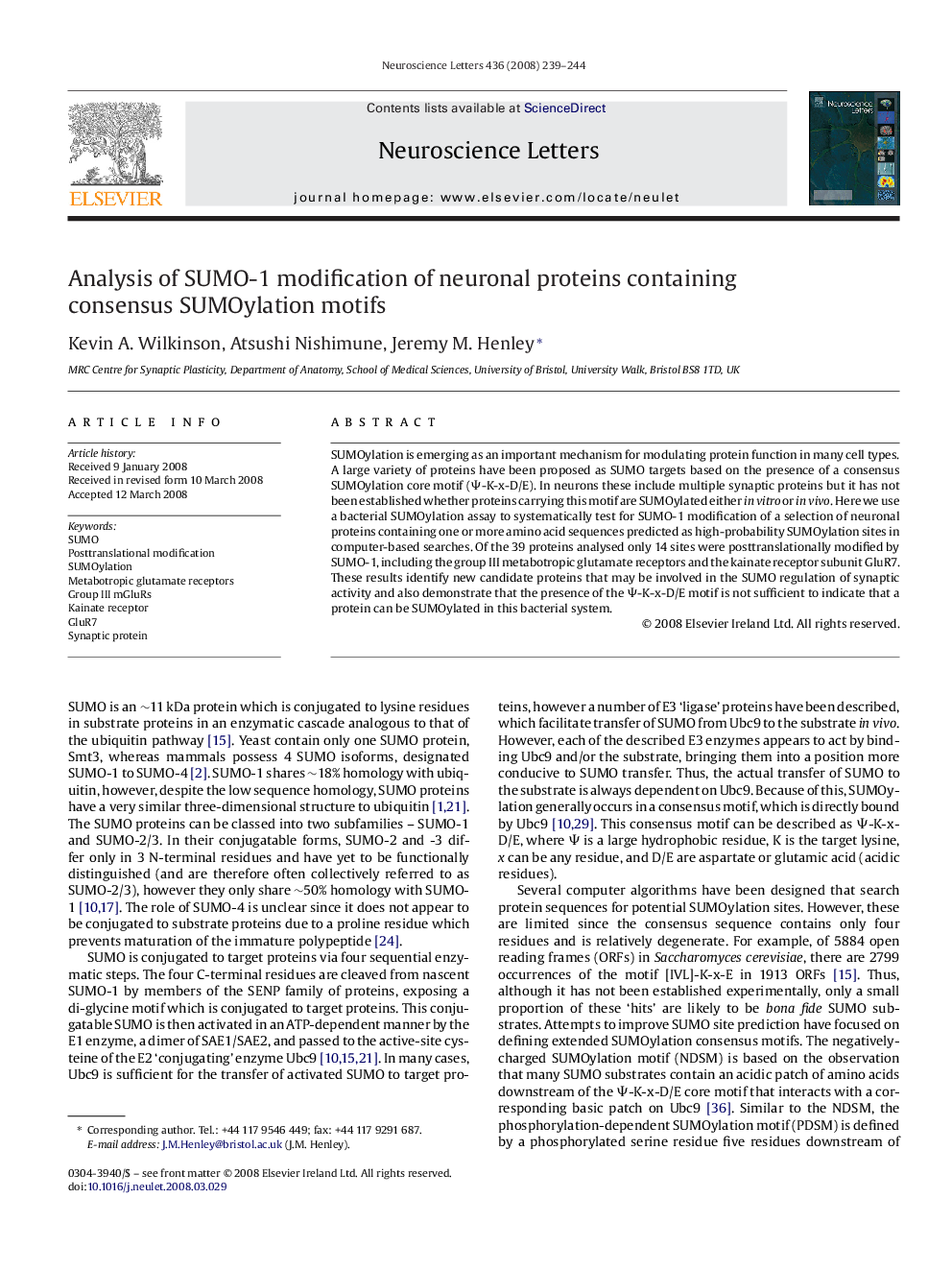| Article ID | Journal | Published Year | Pages | File Type |
|---|---|---|---|---|
| 4348551 | Neuroscience Letters | 2008 | 6 Pages |
SUMOylation is emerging as an important mechanism for modulating protein function in many cell types. A large variety of proteins have been proposed as SUMO targets based on the presence of a consensus SUMOylation core motif (Ψ-K-x-D/E). In neurons these include multiple synaptic proteins but it has not been established whether proteins carrying this motif are SUMOylated either in vitro or in vivo. Here we use a bacterial SUMOylation assay to systematically test for SUMO-1 modification of a selection of neuronal proteins containing one or more amino acid sequences predicted as high-probability SUMOylation sites in computer-based searches. Of the 39 proteins analysed only 14 sites were posttranslationally modified by SUMO-1, including the group III metabotropic glutamate receptors and the kainate receptor subunit GluR7. These results identify new candidate proteins that may be involved in the SUMO regulation of synaptic activity and also demonstrate that the presence of the Ψ-K-x-D/E motif is not sufficient to indicate that a protein can be SUMOylated in this bacterial system.
